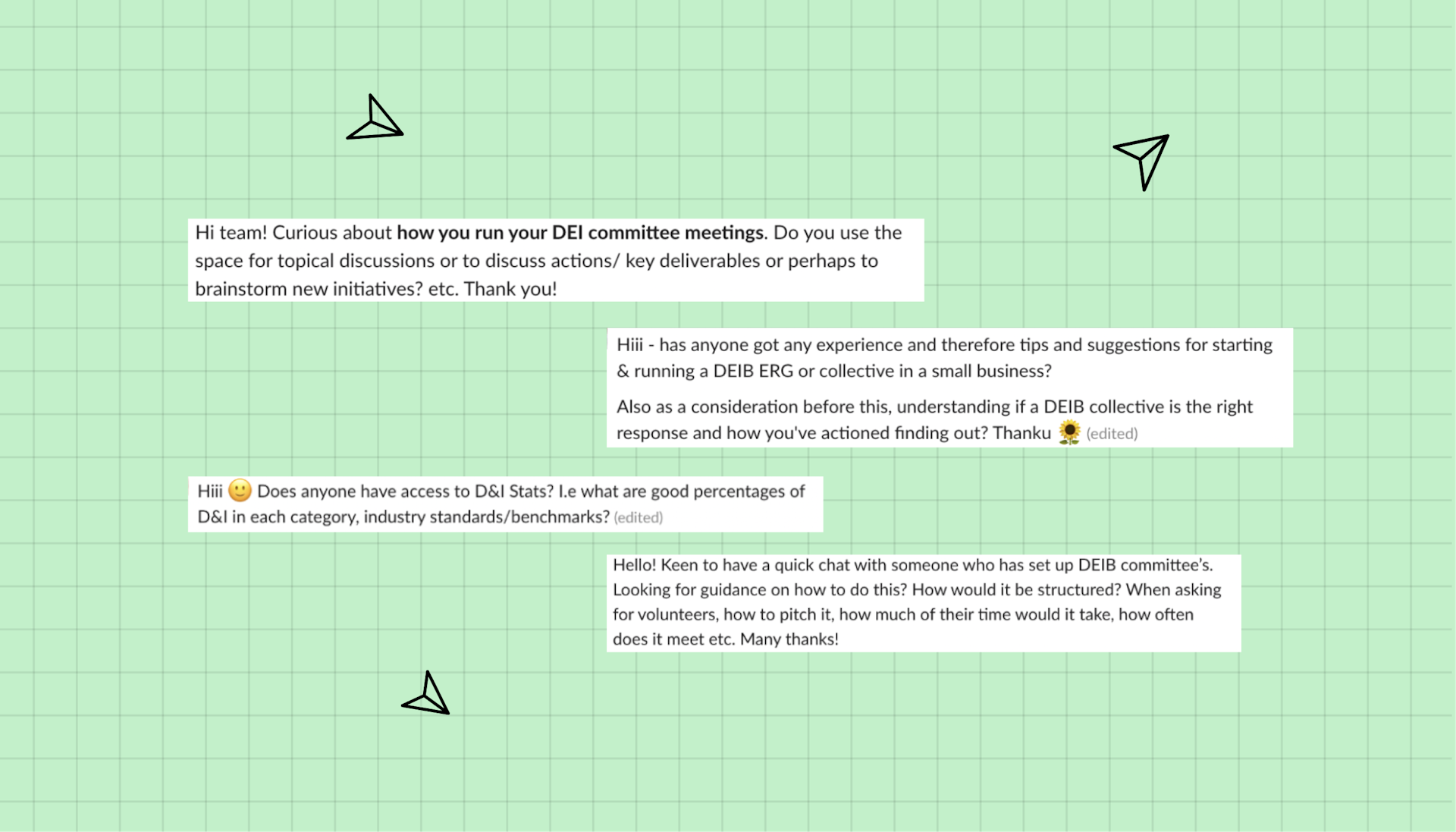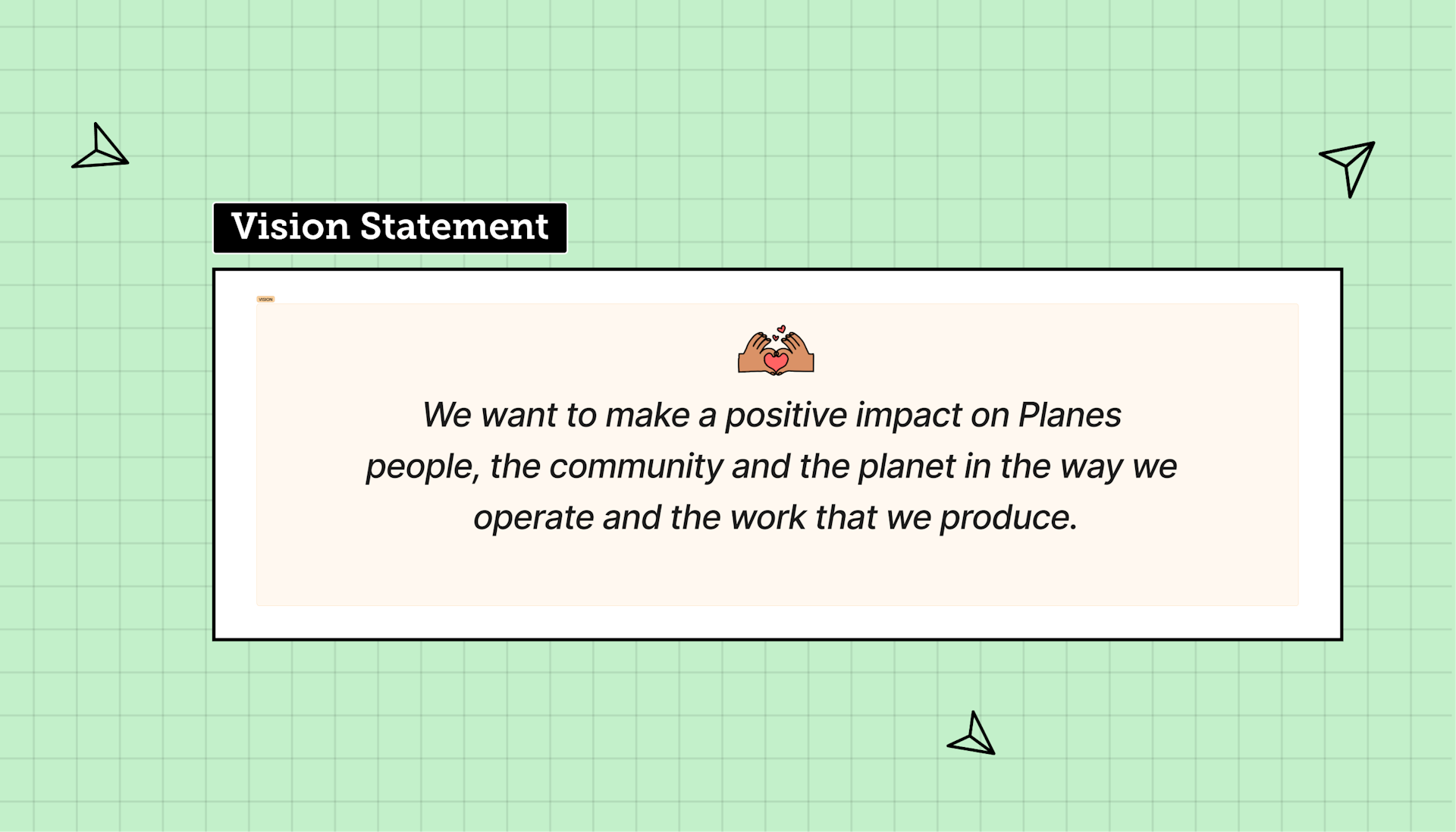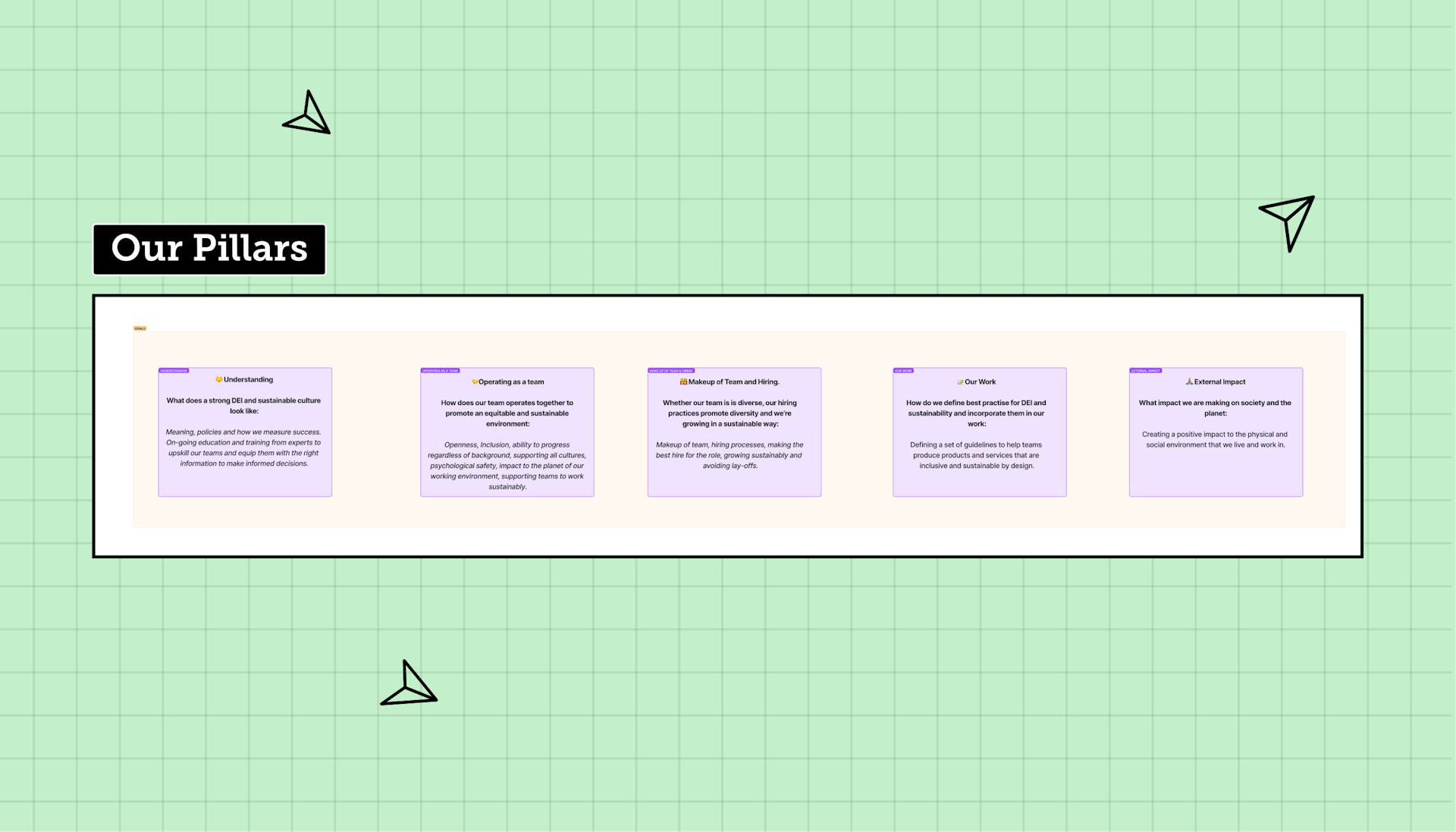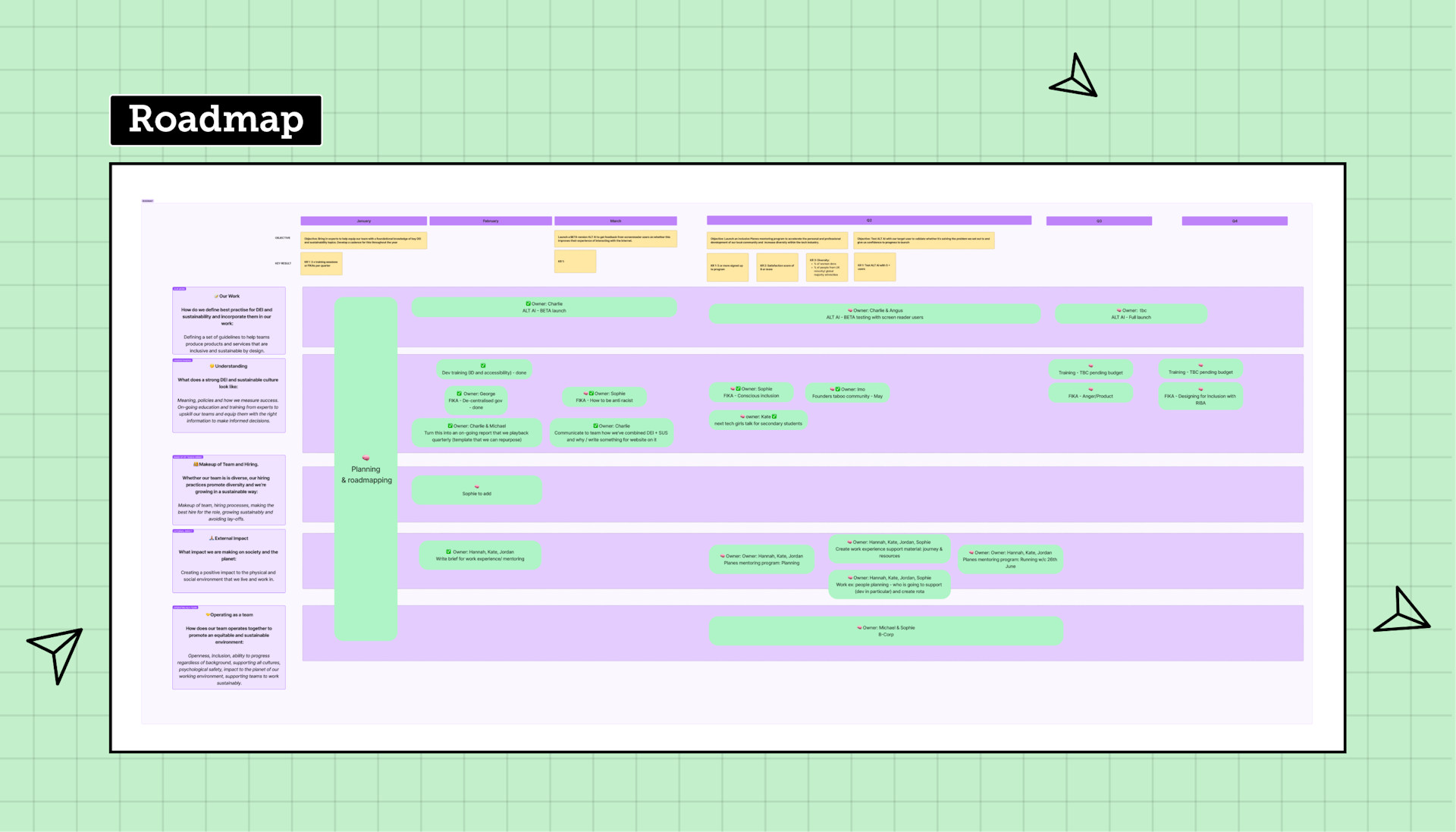3 product techniques to help you define a positive impact strategy
By Charlie Wileman - 5 September 2025
5 Min Read
Businesses are becoming more aware of their impact on the environment and society. With greater awareness comes a need for effective strategies that help companies deliver on their DE&I and Sustainbility goals. We like to call this a positive impact strategy.
While the motivation to get a positive impact strategy going is there, teams still struggle to get this kind of initiative off the ground.
So what’s getting in the way? Knowing where to start and how to gain momentum is really hard. How do you get buy-in from your teams? How do you decide which initiatives to focus on? And how do you measure success?
The answer is product. Using three simple yet effective product management tools can help you define and implement a positive impact strategy that has quantifiable outcomes.
Read on to learn how to use a product mindset to define and implement your positive impact strategy.

1. Align your team towards a vision:
Building an effective positive impact strategy starts by building a team invested in implementing the strategy. We suggest getting early interest via email or Slack, this will help you gauge the resource you are able to commit to your strategy.
Once you’ve got your team together, you can start aligning everyone towards a shared vision. Running a vision workshop will help get everyone on the same page, and give you the context to make decisions about what to prioritise.
When running your vision workshop be sure to ask these three questions:
What problem are we trying to solve?
Who are we solving it for?
What does success look like?

Once you’ve run the workshop you should be able to create your vision statement and break down your focus into pillars (we picked things like operating as a team, our work, and external impact).

Top Tip: The vision statement doesn’t have to be perfect, what’s important is that it’s co-created and that the team feel bought into the north star that you’re working towards.
2. Build your roadmap
A roadmap enables your team to plan and communicate what you’re going to be working on for the next 6-12 months. It helps you to answer questions like:
What are the goals that we’re working towards?
What are the initiatives that will help us to get there?
What tasks do we need to complete?
How should we prioritise our work?
To build your roadmap, use the pillars you created in your vision workshop and get together as a team to ideate initiatives that could fit under each pillar.
Once you’ve come up with some initiatives, vote on which ideas you feel will be the most effective in helping you implement your vision statement.
The voting stage will help you build a prioritised roadmap which will help you achieve your impact goals.

Top Tip: Start small! We fell into the trap of trying to tackle too many problems at once which made it hard to make meaningful progress on any of them.
3. Define short-term objectives:
Defining short-term objectives helps any team break down a vision into measurable steps and answer questions like:
What do we want to accomplish?
How will we know that we've accomplished it?
There’s a range of different frameworks for defining objectives, so you can choose the one that works best for your team and business.
Using OKR’s worked well for us because they help to create focus and alignment, while also breaking goals down into manageable and clearly defined chunks.
Here’s an example of one of our OKRs for this quarter:

Top Tip: Your objective should be clear, concrete and inspirational. The supporting key results should clearly describe outcomes and be time-bound OR measurable.
What comes next?
Having a positive impact strategy is all well and good, but making sure it happens is where the real work is required.
After you’ve built your strategy be sure to create a framework for tracking progress. For example, we landed on a weekly 30-minute session that is used primarily as a status update (think of it as an extended stand-up).
We ask the following questions:
What have we accomplished since the last session?
What are we working on next?
Are we blocked or do we need any support from the wider team?
Don’t forget to implement a reporting process, it’ll help keep your team stay accountable as well as allowing you to uncover initiatives that are and aren’t helping you achieve your overall aims.
Part of your reporting should also include presenting back to the wider business, make sure you report on the impact of your initiatives.
Outline how they support or contribute towards the company's overall business strategy. This will help you get buy-in from the leadership team, and can help you get more people involved. Plus it's nice to shout about everything you’ve achieved.